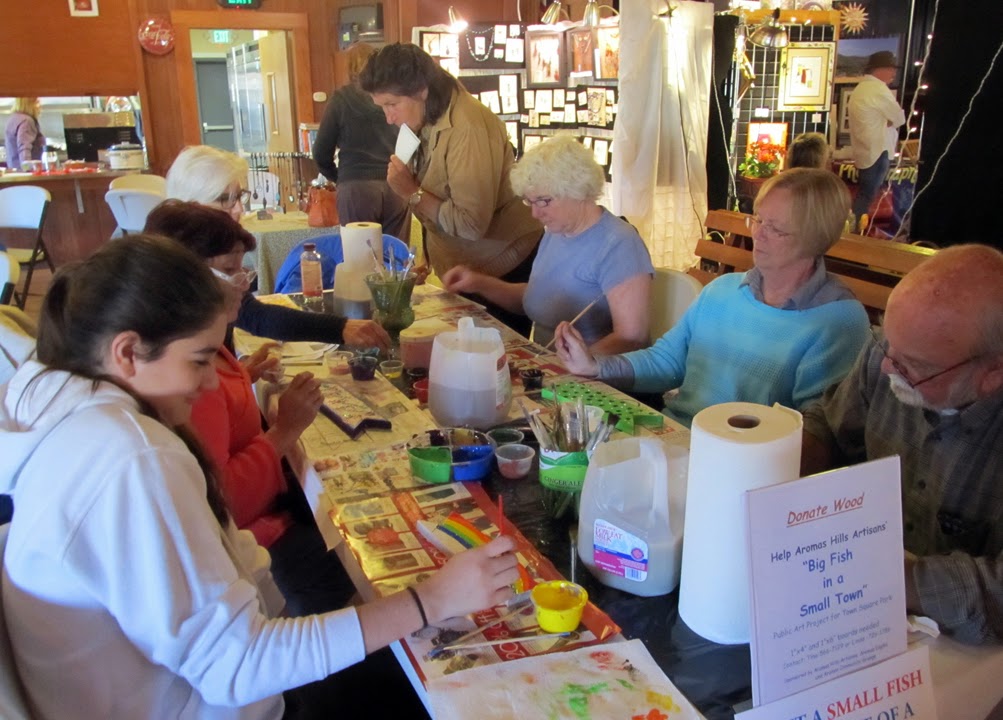Natural Color
Originally published October 2016 in the Santa Cruz Sentinel
Sasha Duerr’s new book, “Natural Color,” poses a difficult question and
provides some thoughtful answers. The question is an ever-present, global one:
What more can we do to help our planet? The answer is: Rethink where color in
our fabrics comes from.
Duerr says that although we don’t eat our clothing and textiles, the
process of dyeing them is nevertheless poisoning us and our planet. She
provides these startling statistics about the contamination of our water:
- The World Bank estimates that 17 to 20 percent of the world’s industrial water pollution comes from textile dyeing and treatment.
- There are 72 toxic chemicals in our water that originate purely from the dyeing process; of these 30 cannot be removed. (See “A Cancer Cycle, From Here to China” at www.nytimes.com)
She blames “fast fashion”—the relentless mandate of the fashion
industry to convince us that, although an article of clothing may still be
functional, it must be replaced by something more stylish. She compares fast
fashion to fast food, since, in both cases, rapid consumption rules the day with
little thought given to the negative consequences.
Duerr carries the relationship between food and fashion further. She writes that “just as many of us have lost our basic knowledge of food and cooking . . . so too the basic knowledge and practice of making plant-based color for fashion and textiles have been lost.” As the slow food movement strives to link the pleasures of the table with a commitment to community and environment protection, Duerr seeks to connect textiles and fashion with the same commitment to global health.
Even though our grandmothers were using more natural, recognizable ingredients
in their cooking than we are today, I’m not sure they were dyeing their own
fabric. When tie-dyeing and batik became popular in the US in the 1960s and
70s, and many textile artists were experimenting at home with natural
plant-based colors for dyeing fabric, dangerous metal mordants such chrome,
tin, and copper were part of the recipe. Mordants are necessary to help dyes
bond with fibers, making fabrics colorfast through washing and wearing cycles.
For certain natural dye sources and colors, powdered metals are still a
necessary part of Duerr’s recipes, although she works only with alum and iron,
the safest choices. Nevertheless, she uses these less-toxic metals with
“extreme care and caution” (e.g. gloves, lids on pots, dust masks, dedicated
tools and equipment, safe disposal of spent dyes, etc.). Fortunately, adding a
metal mordant is not always necessary.
When oil paints gave Duerr headaches and nausea as a budding artist in
her early 20s, Duerr began investigating natural colorants in India, Nepal,
Tibet and Indonesia. Plants have provided of a whole gamut of textile colors
for centuries, but it was not easy finding the how-to of sustainable plant dye
practices in her travels. She continued her research in the San Francisco Bay
Area, where she “fell in love with the variety and sources of plant-based
palettes” available in her new backyard. She wrote her MFA thesis on dyeing
without toxic metal mordants and founded Permacouture Institute in 2007, to
continue the exploration of responsible fashion and textile practices.
For Mother’s Day a few years ago my farmer daughter sent me a set of
seven small pen and ink drawings of individual vegetables and fruits. She
tinted each image with color distilled from the subject itself. I displayed the
drawings in my kitchen and over time the colors have all disappeared, except
for the cabbage, which is still an olive green. So why didn’t the cabbage fade?
Some plants have built-in mordants that bind their color to fiber (or paper)
without additives. Plant-based materials that Duerr uses for making color-fast
dyes include avocado pits, loquat leaves, eucalyptus bark, and pomegranate
rinds, which all contain significant amounts of tannin. Safer mordants have
also been made from proteins like milk or soy, and even from plants that absorb
metals like aluminum through their roots.
Duerr encourages readers to start dyeing with “the wayward white wool
sweater in the back of your closet that you haven’t worn and the leftover
by-products of your favorite meal before they hit your compost pile.” With
natural dyes, your fabric fiber choices are also natural:
- Protein fibers (animal-based): Alpaca, angora, cashmere, silk, wool
- Cellulose fibers (plant-based): Cotton, hemp, linen, nettle, piña, ramie, sisal
The projects in “Natural Color” are arranged by the seasons, and fall
includes “Hopi black sunflower seed wool rug” and “Madder root scarf.” (Madder
root can make vibrant, clear reds, otherwise difficult to find in nature.)
Tannin-rich persimmons are typically used green, and require a week of
fermentation and a year of aging, so you should start gathering them now for
next year’s projects. Winter is for pomegranate rinds, purple cabbage leaves,
blue spruce branches and redwood cones.
For fun I decided to give her “Avocado pit pillowcases” project a try,
although when I couldn’t hunt down linen of any sort on my shopping safari, I
used cotton napkins instead. I found washing soda and something approximating Marseille
soap at Nob Hill, which are needed to help release built-up waxes, dirt and
oils in the cotton fibers prior to dyeing. The pre-washing, dyeing,
post-washing and drying took the better part of a day, but the results were
nice enough: the pits turned the white cotton a nice, organic shade of pink.


































